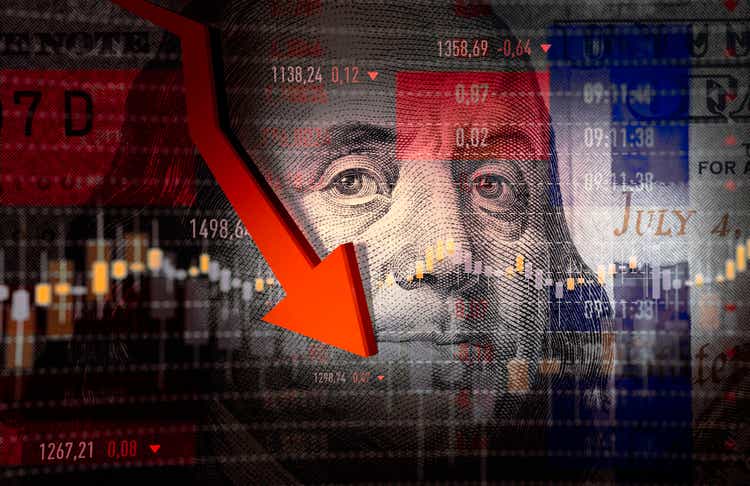sefa ozel
You Are What You Read
Early last week, US stock market indices rose gently. The pundits view inflation as having peaked globally, with “factory gate and commodity prices, shipping rates and inflation expectations have begun to subside”. The Federal Reserve is expected to reduce the acceleration of interest rates shortly.
Meanwhile, Washington was simultaneously trying to avoid a national rail strike by imposing additional costs on the railroads. These costs would be imposed on all using freight delivered by rail and would encourage others to raise labor demands, which, if successful, would lead to higher prices.
If there is going to be a recession, believers think it will be short-lived and shallow.
What causes inflation?
Inflation is created by demand exceeding available supply. Rarely is it caused by free markets working on their own.
Our current inflation started with the last two Presidents, who flooded the economy with grants. These grants were beyond the immediate need of the unfortunate who required help. This approach is hardly new – it was implemented in ancient Greece and Rome and is still practiced in numerous countries today.
On day one, the current administration went even further by restricting supply. They first killed the pipelines, then implemented regulations forcing providers to raise prices to cover government-mandated expenses.
The government turned to the Fed, utilizing it as a hammer to beat down the rate of inflation. The Fed was like a person given only a hammer to build a home – they only had the ability to use interest rates to curtail demand.
Business leaders eventually recognized that curtailed demand would likely lead to lower revenues and consequently started to cut back on their current and future labor force.
One example of this is the broker/dealer community. While an index of publicly traded broker/dealers is close to its all-time high, leading firms are laying people off. Evidenced of this can be seen in a recent statement by the CEO of Morgan Stanley. (The stock is held in our financial services fund.)
This message is being read and acted upon. ADP, in their latest survey, indicated that private sector employment is at the lowest it has seen in two years. (Also held in our financial services private fund.)
What Does the Data Say?
While both concurrent and lagging indicators are slowly rising, the leading indicator is dropping.
IBES, via Refinitiv, is predicting S&P 500 net income will show a -3.6% decline in the fourth quarter. The first three quarters in 2023 will be +0.7%, -0.9%, and +3.5%, respectively.
Bank of America reminds us that December will most likely be an “up” month. Nevertheless, they predict a global recession, the reopening of China, and re-shoring in Europe and the US in 2023.
Two Other Views
Market indices are being influenced by their leading components. The Dow Jones Industrial Average (DJIA) is the best-performing index. It is both closest to its former high and has the biggest gain from its most recent low. DJIA’s performance has been driven by its goods-producing and selling companies, which are not normally its best investments.
The Standard & Poor’s composite index is market capitalization-weighted. Something that is most useful to investment institutions managing large single portfolios deemed to be high-quality companies.
The NASDAQ Composite is now made up of companies that, for one reason or another, don’t list on the “big board”. In terms of the number of shares traded, it is the largest stock exchange in the world, followed by the London Stock Exchange. The New York Stock Exchange (NYSE) is third on the list but probably has more capital listed than others.
Nevertheless, the NASDAQ often leads the US and many other exchanges in terms of performance. Perhaps it is due to the fact that it has younger and faster-growing companies. (We also own its shares in our financial services fund.)
I pay particular attention to NASDAQ performance compared to the NYSE. I noted with some concern that the NYSE had 89 stocks achieving a new high and 44 a new low on Friday. The NASDAQ had 97 new highs and 128 new lows. Since the NASDAQ has more listed companies, I am not disturbed by the number of new highs. Unless this is an aberration, the sharp difference in the number of new lows relative to the number of new highs could be a warning. I will follow carefully.
One of the most thoughtful large mutual fund management companies is the Capital Group in Los Angeles. It has been investing beyond US borders for many years and summed up why in the five points listed below:
- International investing is about companies not countries.
- A strong US dollar won’t last forever. (Dropping recently)
- Dividend opportunities are greater outside the US.
- New economy depends on old industries.
- Not all of the best stocks are in the US.
This is why I believe it is prudent to have some money invested beyond US borders.
Editor’s Note: The summary bullets for this article were chosen by Seeking Alpha editors.


Be the first to comment